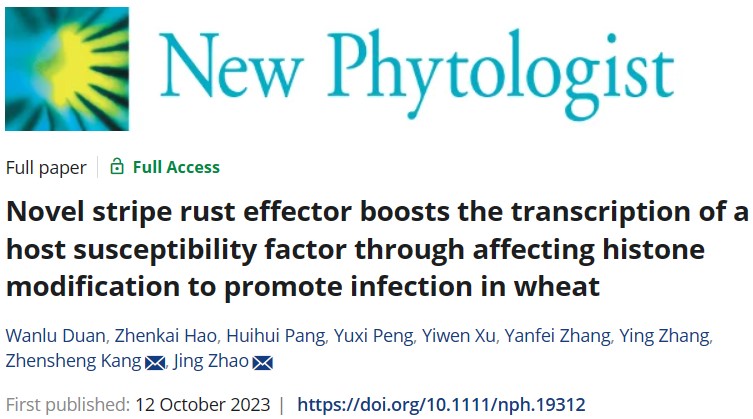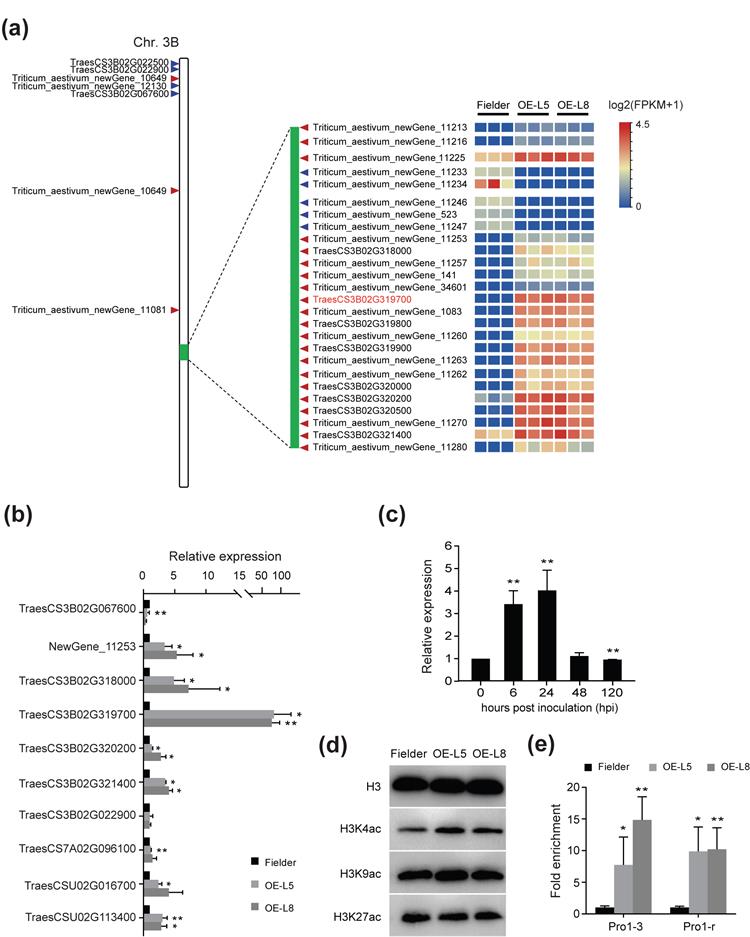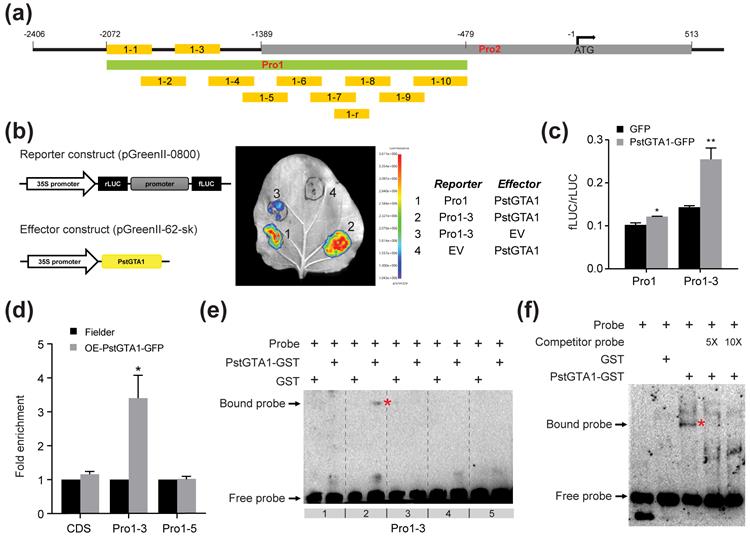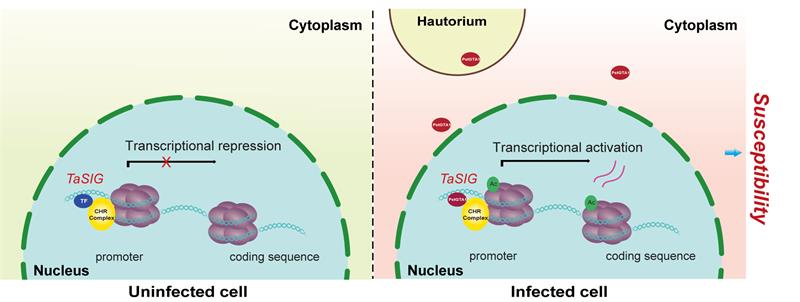Recently, the Plant Immunity Research Team from our college published a research paper titled "Novel stripe rust effector boosts the transcription of a host susceptibility factor through affecting histone modification to promote infection in wheat" in New Phytologist online. The study first directly discovered the effector PstGTA1 with transactivation activity in fungi, which targets the host gene promoter and increases its histone acetylation levels to activate the transcription of wheat-specific susceptibility genes. Duan Wanlu, a Ph.D student from our college, is the first author of the paper, with Associate Researcher Zhao Jing and Academician Kang Zhensheng as the corresponding authors.

Regulating host gene expression is one of the important means by which pathogens cause disease. However, the molecular mechanisms by which plant pathogenic fungi directly regulate host gene expression are still poorly understood. The study found that PstGTA1 is partially homologous to the chromatin remodeling complex SNF2 subunit, secreted and transported into wheat cell nuclei during stripe rust infection, and its C-terminus exhibits transcriptional activation activity. Silencing PstGTA1 significantly inhibited the growth and development of stripe rust, while overexpressing PstGTA1 significantly enhanced wheat susceptibility to stripe rust, indicating the important role of PstGTA1 in the infection process.

Figure 1: PstGTA1 Activates TaSIG Expression by Modulating H3K4 Acetylation Levels
Transcriptome sequencing analysis of transgenic wheat overexpressing PstGTA1 revealed that among 78 differentially expressed wheat genes, 33 upregulated genes were located on wheat chromosome 3B, with 26 clustered in the same region. Among them, TaSIG was induced to express and significantly higher than other genes, suggesting that the mechanism by which PstGTA1 regulates transcription seems to be related to chromatin remodeling. Chromatin remodeling is usually accompanied by histone modifications, such as H3 acetylation modification. Therefore, acetylation level detection in overexpressed wheat revealed a significant increase in H3K4 acetylation level compared to wild-type wheat Fielder. Chip-qPCR results showed that the H3K4 acetylation level in the TaSIG promoter region was significantly enriched. These results indicate that PstGTA1 regulates its expression by affecting the histone acetylation of the chromatin segment where TaSIG is located. Furthermore, using DLR, Chip-qPCR, and EMSA further demonstrated that PstGTA1 can directly bind to the TaSIG promoter to activate its expression. Further analysis showed that transient silencing of TaSIG significantly reduced wheat susceptibility to Pst.

Figure 2: Specific Binding of PstGTA1 to the TaSIG Promoter Sequence
This study identified a stripe rust transcriptional activator, PstGTA1, which can directly bind to the promoter of the host susceptibility factor TaSIG and activate its transcription by increasing H3K4 acetylation, ultimately promoting wheat susceptibility to stripe rust.

Figure 3: Working Model of PstGTA1 Facilitating Wheat Stripe Rust (Pst) Pathogenesis
This work was supported by the National Key Research and Development Program (2021YFD1401001), the Natural Science Foundation of Shaanxi Province (2023-JC-YB-149), and the Ministry of Science and Technology "111 Plan" (BP0719026).
Original link: https://nph.onlinelibrary.wiley.com/doi/10.1111/nph.19312